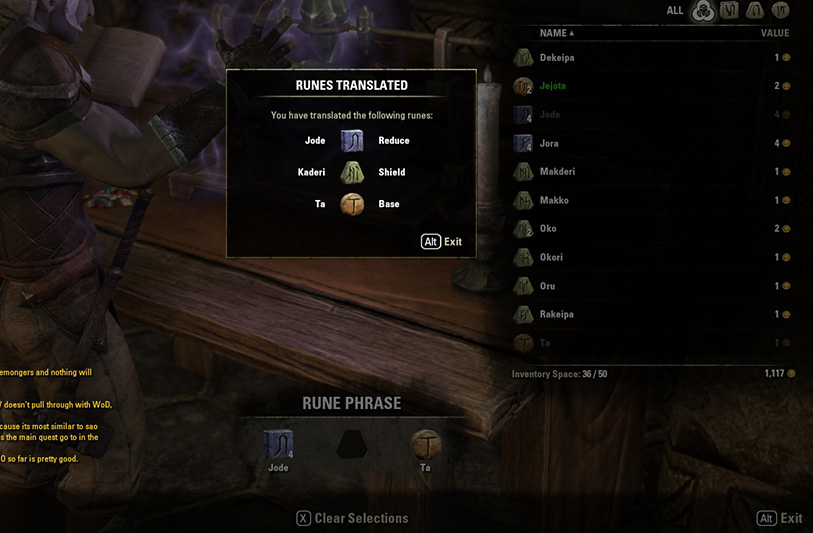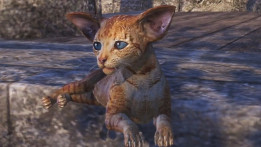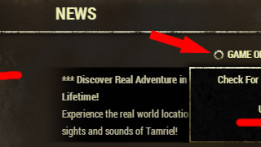Enchanting - Resources, Runes, Glyphs
Table of contents
- Skills
- Runes and Rune Types
- List of All Glyphs
- Creating a glyph
- How to enchant an item?
- Extraction
- Profit
- Video Guide
Enchanting is one of 6 professions in Elder Scrolls Online. It allows player to improve armor, weapons and jewelry by adding new effects. An Enchanter does not modify items directly; instead, he creates glyphs that can be applied to items. This profession will help you to modify your own items and earn gold selling rare glyphs to other players.
Skills
As any other crafting profession Enchanting has dedicated skill line but unlike most of other professions it consists of 5 passive abilities (Blacksmithing for example has 6 passives) and you will have to spend 20 skill points to master all the skills.
| Aspect Improvement (1/4) | Allows the use of [Aspect rune type] to create Glyphs of X quality. | |
| Potency Improvement (1/9) | Allows the use of [Potency rune types] to make Glyphs of Level X - Y. | |
| Keen Eye: Rune Stones (0/3) | Runes in the world will be easier to see within 20/30/40 meters. | |
| Hireling (0/3) | A hireling will send you runes every day. | |
| Aspect Extraction (0/3) | Increases the chance of extracting Aspect rune stones by 5% |
These abilities will help you to progress in this profession. The most important passives are Aspect Improvement and Potency Improvement because you will not be able to progress in Enchanting without mastering these abilities.
Runes and Rune Types
You can create Glyphs from runes that can be found throughout the whole continent. There are three types of runes in ESO: Potency Runes, Essence Runes and Aspect Runes. You need at least 1 rune from each group to create a Glyph. That’s why the process of gathering is very important – you need to gather as many runes as you can.
The runes are not difficult to find. They are usually found standing near stones or trees. But you must be quick once you detect one as other players are also searching for them.
Potency Runes
Potency Runes are the first type of runes you will need. They have a square shape, are easy to recognize and you can gather them from blue gathering nodes. Potency Runes are important as they determine the level you must to be to use the glyph.
Potency Runes can be either additive or subtractive. Additive can boost, increase, gain or add something. Subtractive can decrease, lower, reduce, weaken or subtract something. For example, additive Potency Rune combined with other runes will provide you with a glyph that adds x Frost damage to weapon while the subtractive one will give you glyph that adds Resistance to frost.
Additive Potency Runes
| Rune | Translation | Glyph Prefix | Potency Level | Gear Level |
|---|---|---|---|---|
| Jora | Develop | Trifling | Level 1 | Level 1—10 |
| Porade | Add | Inferior | Level 1 | Level 5—15 |
| Jera | Increase | Petty | Level 2 | Level 10—20 |
| Jejora | Raise | Slight | Level 2 | Level 15—25 |
| Odra | Gain | Minor | Level 3 | Level 20—30 |
| Pojora | Supplement | Lesser | Level 3 | Level 25—35 |
| Edora | Boost | Moderate | Level 4 | Level 30—40 |
| Jaera | Advance | Average | Level 4 | Level 35—45 |
| Pora | Augment | Strong | Level 5 | Level 40—50 |
| Denara | Strenghten | Major | Level 5 | Veteran Rank 1—3 |
| Rera | Exaggerate | Greater | Level 6 | Veteran Rank 3—5 |
| Derado | Empower | Grand | Level 7 | Veteran Rank 5—7 |
| Recura | Magnify | Splendid | Level 8 | Veteran Rank 7—9 |
| Kura | Intensify | Monumental | Level 9 | Veteran Rank 10-14 |
Subtractive Potency Runes
| Rune | Translation | Glyph Prefix | Potency Level | Gear Level |
|---|---|---|---|---|
| Jode | Reduce | Trifling | Level 1 | Level 1—10 |
| Notade | Subtract | Inferior | Level 1 | Level 5—15 |
| Ode | Shrink | Petty | Level 2 | Level 10—20 |
| Tade | Decrease | Slight | Level 2 | Level 15—25 |
| Jayde | Deduct | Minor | Level 3 | Level 20—30 |
| Edode | Lower | Lesser | Level 3 | Level 25—35 |
| Pojode | Diminish | Moderate | Level 4 | Level 30—40 |
| Rekude | Weaken | Average | Level 4 | Level 35—45 |
| Hade | Lessen | Strong | Level 5 | Level 40—50 |
| Idode | Impair | Major | Level 5 | Veteran Rank 1—3 |
| Pode | Remove | Greater | Level 6 | Veteran Rank 3—5 |
| Kedeko | Drain | Grand | Level 7 | Veteran Rank 5—7 |
| Rede | Deprive | Splendid | Level 8 | Veteran Rank 7—9 |
| Kude | Negate | Monumental | Level 9 | Veteran Rank 10—14 |
Essence Runes
Essence Runes can be gathered from yellow nodes and can be recognized in the inventory by their trapezoid shape. While Potency Runes determine the action (add or subtract) Essence Runes determine subject - the attribute or stat that the enchant affects.
| Rune | Translation |
|---|---|
| Dekeipa | Frost |
| Deni | Stamina |
| Denima | Stamina Regen |
| Deteri | Armor |
| Haoko | Disease |
| Kaderi | Shield |
| Kuoko | Poison |
| Makderi | Spell Harm |
| Makko | Magicka |
| Makkoma | Magicka Regen |
| Meip | Shock |
| Oko | Health |
| Okoma | Health Regen |
| Okori | Power |
| Oru | Alchemist |
| Rakeipa | Fire |
| Taderi | Physical Harm |
Aspect Runes
Aspect Runes can be gathered from red runestone nodes and can be recognized in the inventory by their round shape.
This type of runes determines the quality of the glyph you will make. As you probably know there are 5 quality levels starting from Basic up to Legendary. You can influence the quality of your future Glyph by changing the Aspect Rune.
| Rune | Translation | Quality (Item color) | Aspect Level |
|---|---|---|---|
| Ta | Base | White | Level 1 |
| Jejota | Fine | Green | Level 1 |
| Denata | Superior | Blue | Level 2 |
| Rekuta | Artifact | Purple | Level 3 |
| Kuta | Legendary | Gold | Level 4 |
Tip: Aspect Runes are rare and are much more difficult to find than other runes. You should never miss red gathering nodes. If you are not enchanter you can gather Aspect Runes for selling. They have rather high price.
List of All Glyphs
Right now there are three major categories of Glyphs in ESO: armor, weapon and jewelry. For example Armor Glyph can be applied to pieces of armor only. You can’t enchant your weapon with armor glyph.
Armor Glyphs
There are three types of Armor Glyphs – for increasing health, magicka or stamina. You can increase one of you core attributes with these armor glyphs.
| Name | Description | Potency Rune | Essence Rune |
|---|---|---|---|
| Glyph of Magicka | Adds Max Magicka | Any Additive Potency Rune | Makko |
| Glyph of Health | Adds Max Health | Any Additive Potency Rune | Oko |
| Glyph of Stamina | Adds Max Stamina | Any Additive Potency Rune | Deni |
There is one thing you should know: different armor pieces have different enchanting slots.
- Head, Chest, Legs and Shield have Normal slots
- Shoulders, Hands, Waist and Feet have Small slots
The difference is: when you enchant a piece of armor with a normal slot you receive the full effect of the glyph you used. When you enchant an item with small slot the effect will be lowered and you will receive about 40% – 50% of the promised effect.
For example you have an armor glyph that increases magicka by 100. If you enchant an item with normal slot you will get +100 magicka bonus. If you enchant an item with small slot you will get +50 magicka. Don’t forget about this!
Weapon Glyphs
| Name | Description | Potency Rune | Essence Rune |
|---|---|---|---|
| Glyph of Frost | Deals Frost Damage | Any Additive Potency Rune | Dekeipa |
| Glyph of Foulness | Deals Disease Damage | Any Additive Potency Rune | Haoko |
| Glyph of Poison | Deals Poison Damage | Any Additive Potency Rune | Kuoko |
| Glyph of Shock | Deals Shock Damage | Any Additive Potency Rune | Meip |
| Glyph of Rage | Increases your Power by ‘x’ for ‘y’ seconds | Any Additive Potency Rune | Okori |
| Glyph of Flame | Deals Fire Damage | Any Additive Potency Rune | Rakeipa |
| Glyph of Hardening | Grants a ‘x’ point Damage Shield for ‘y’ seconds | Any Additive Potency Rune | Deteri |
| Glyph of Absorb Magicka | Deals Magic Damage and recovers Magicka | Any Subtractive Potency Rune | Makko |
| Glyph of Absorb Health | Deals Magic Damage and recovers Health | Any Subtractive Potency Rune | Oko |
| Glyph of Decrease Health | Deals unresistable damage | Any Subtractive Potency Rune | Okoma |
| Glyph of Weakening | Reduce target’s Power by ‘x’ for ‘y’ seconds | Any Subtractive Potency Rune | Okori |
| Glyph of Absorb Stamina | Deals Magic Damage and recovers Stamina | Any Subtractive Potency Rune | Deni |
| Glyph of Crushing | Reduce target’s Armor by ‘x’ for ‘y’ seconds | Any Subtractive Potency Rune | Deteri |
Jewelry Glyphs
| Name | Description | Potency Rune | Essence Rune |
|---|---|---|---|
| Glyph of Increase Physical Harm | Adds Weapon Damage | Additive | Taderi |
| Glyph of Health Regen | Adds Health Recovery | Additive | Okoma |
| Glyph of Magicka Regen | Adds Magicka Recovery | Additive | Makkoma |
| Glyph of Bashing | Increase Bash Damage | Additive | Kaderi |
| Glyph of Stamina Regen | Adds Stamina Recovery | Additive | Denima |
| Glyph of Potion Boost | Increase Potion effect | Additive | Oru |
| Glyph of Increase Magical Harm | Adds Spell Damage | Additive | Makderi |
| Glyph of Frost Resist | Adds Frost Resistance | Subtractive | Dekeipa |
| Glyph of Poison Resist | Adds Poison Resistance | Subtractive | Kuoko |
| Glyph of Decrease Spell Harm | Adds Spell Resistance | Subtractive | Makderi |
| Glyph of Decrease Physical Harm | Adds Armor | Subtractive | Taderi |
| Glyph of Reduce Feat Cost | Reduce Stamina cost of abilities | Subtractive | Denima |
| Glyph of Disease Resist | Adds Disease Resistance | Subtractive | Haoko |
| Glyph of Shielding | Reduce cost of Bash and reduce cost of Blocking | Subtractive | Kaderi |
| Glyph of Reduce Spell Cost | Reduce Magicka cost of Spells | Subtractive | Makkoma |
| Glyph of Shock Resist | Adds Shock Resistance | Subtractive | Meip |
| Glyph of Potion Speed | Reduce the cooldown of Potions below this item’s level by ‘x’ seconds | Subtractive | Oru |
| Glyph of Fire Resist | Adds Fire Resistance | Subtractive | Rakeipa |
Creating a Glyph
You need to find an Enchanter’s Station in order to start crafting. These can be found in all the major cities throughout ESO. As any other crafting station the Enchanter’s table can be used by many players simultaneously.
Enchanting is pretty similar to Alchemy: when you first start out you don't know the effects of the runes. If you look at the appearance of watch rune you will notice that something is written there. But your character does not know how to use each rune. You need to discover all the effects yourself. This process is called "Rune Translating":

You can do this by combining different runes and trying to create something. If your attempt is successful you will create a glyph and discover new traits (effects) for particular runes. This process is very interesting and challenging and depends on the luck.
How to enchant an item?
After you have created a Glyph you may apply it to an item. Simply go to your inventory, Right Click on the item you want to enchant and choose “Enchant” from the dropdown menu. You will see a special window where you can choose your glyph and apply it (the glyph must be in your inventory). Once the process is finished you will get a new effect on your item. The glyph you used will disappear. 1 glyph = 1 enchantment.
Don’t forget that each item has only 1 slot for enchanting in ESO. If you apply another enchantment, the previous one will disappear.
Extraction
Enchanters can not only create Glyphs but also extract runes from glyphs. All you need for this is to have a glyph in the inventory. Extraction will not only provide you with extra runes but also will give you some experience in Enchanting. You will loot many different runes from your enemies and it is a very good source of glyphs.
Profit
Selling glyphs is a rather good way to make money. Low level glyphs (enchants) are not very popular and it’s difficult to earn money from low level glyphs. But you can sell high level glyphs at a high price. Players are looking for high level enchants for their gear. High level enchants of the best quality can make any gear much better.
Don’t forget that the price of a glyph depends on the quality. The higher the quality is the more money you can earn.
- White - Normal
- Green – Fine
- Blue – Superior
- Violet – Epic
- Yellow – Legendary
Video Guide
You need to login to add comments.





Comments ()